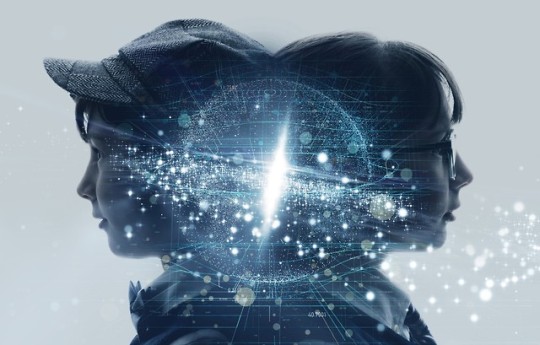#Friedrich Alexander University of Erlangen Nuernberg
Explore tagged Tumblr posts
Photo

“Multi-layer melting of a certain area / hatch“
#transparent#cursing the gif tree#selective electron beam melting#simulation#fruits edit#Faculty of Engineering#Chair of Materials Science and Engineering for Metals (WTM)#Friedrich Alexander University of Erlangen Nuernberg
23 notes
·
View notes
Photo

Unleashing Big Data of the Past – Europe builds a Time Machine
Iconem is proud to announce that the European Commission has chosen the Time Machine project as one of the six proposals retained for preparing large scale research initiatives to be strategically developed in the next decade.
Nous sommes fiers d’annoncer que Time Machine a été retenu par la Commission Européenne comme l’un des six projets finalistes qui serviront à préparer des programmes de recherche ambitieux et sur une large échelle pour les prochaines décennies.
A €1 million fund has been granted for preparing the detailed roadmaps of this initiative that aims at extracting and utilising the Big Data of the past. Time Machine foresees to design and implement advanced new digitisation and Artificial Intelligence (AI) technologies to mine Europe’s vast cultural heritage, providing fair and free access to information that will support future scientific and technological developments in Europe.
Alongside 33 prestigious institutions, Iconem will provide its tools and knowledge on the digitisation of endangered cultural heritage sites in 3D.
One of the most advanced Artificial Intelligence systems ever built
The Time Machine will create advanced AI technologies to make sense of vast amounts of information from complex historical data sets. This will enable the transformation of fragmented data – with content ranging from medieval manuscripts and historical objects to smartphone and satellite images – into useable knowledge for industry. Considering the unprecedented scale and complexity of the data, The Time Machine’s AI even has the potential to create a strong competitive advantage for Europe in the global AI race.
Cultural Heritage as a valuable economic asset
Cultural Heritage is one of our most precious assets, and the Time Machine’s ten-year research and innovation program will strive to show that rather than being a cost, cultural heritage investment will actually be an important economic driver across industries. For example, services for comparing territorial configurations across space and time will become an essential tool in developing modern land use policy or city planning. Likewise, the tourism industry will be transformed by professionals capable of creating and managing newly possible experiences at the intersection of the digital and physical world. These industries will have a pan-European platform for knowledge exchange which will add a new dimension to their strategic planning and innovation capabilities.
Time Machine promotes a unique alliance of leading European academic and research organisations, Cultural Heritage institutions and private enterprises that are fully aware of the huge potential of digitisation and the very promising new paths for science, technology and innovation that can be opened through the information system that will be developed, based on the Big Data of the Past. In addition to the 33 core institutions that will be funded by the European Commission, more than 200 organisations from 33 countries are participating to the initiatives, including seven national libraries, 19 state archives, famous museums (Louvre, Rijkmuseum), 95 academic and research institutions, 30 European companies and 18 governmental bodies.
Background
In early 2016, the European Commission held a public consultation of the research community to gather ideas on science and technology challenges that could be addressed through future FET Flagships. A call for preparatory actions for future research initiatives was launched in October 2017 as part of the Horizon 2020 FET Work Programme 2018. From the 33 proposals submitted, six were selected after a two-stage evaluation by independent high-level experts.
The 33 institutions receiving parts of the €1 million to develop Time Machine
1. ECOLE POLYTECHNIQUE FEDERALE DE LAUSANNE
2. TECHNISCHE UNIVERSITAET WIEN
3. INTERNATIONAL CENTRE FOR ARCHIVAL RESEARCH
4. KONINKLIJKE NEDERLANDSE AKADEMIE VAN WETENSCHAPPEN
5. NAVER FRANCE
6. UNIVERSITEIT UTRECHT
7. FRIEDRICH-ALEXANDER-UNIVERSITAET ERLANGEN NUERNBERG
8. ECOLE NATIONALE DES CHARTES
9. ALMA MATER STUDIORUM - UNIVERSITÀ DI BOLOGNA
10. INSTITUT NATIONAL DE L'INFORMATION GEOGRAPHIQUE ET FORESTIERE
11. UNIVERSITEIT VAN AMSTERDAM
12. UNIWERSYTET WARSZAWSKI
13. UNIVERSITE DU LUXEMBOURG
14. BAR-ILAN UNIVERSITY
15. UNIVERSITA CA' FOSCARI VENEZIA
16. UNIVERSITEIT ANTWERPEN
17. QIDENUS GROUP GMBH
18. TECHNISCHE UNIVERSITEIT DELFT
19. CENTRE NATIONAL DE LA RECHERCHE SCIENTIFIQUE
20. STICHTING NEDERLANDS INSTITUUT VOOR BEELD EN GELUID
21. FIZ KARLSRUHE- LEIBNIZ-INSTITUT FUR INFORMATIONS INFRASTRUKTUR GMBH
22. FRAUNHOFER GESELLSCHAFT ZUR FOERDERUNG DER ANGEWANDTEN FORSCHUNG E.V.
23. UNIVERSITEIT GENT
24. TECHNISCHE UNIVERSITAET DRESDEN
25. TECHNISCHE UNIVERSITAT DORTMUND
26. OESTERREICHISCHE NATIONALBIBLIOTHEK
27. ICONEM
28. INSTYTUT CHEMII BIOORGANICZNEJ POLSKIEJ AKADEMII NAUK
29. PICTURAE BV
30. CENTRE DE VISIÓ PER COMPUTADOR
31. EUROPEANA FOUNDATION
32. INDRA
33. UBISOFT
Time machine website : http://www.timemachine.eu/
Contact : Kevin Baumer, Ecole Polytechnique Fédérale de Lausanne, [email protected]
2 notes
·
View notes
Photo

“Melting of the logo „VerTec“ in a single powder layer“
#transparent#cursing the gif tree#selective electron beam melting#simulation#VerTec#balls#fruits edit#Chair of Materials Science and Engineering for Metals (WTM)#Friedrich Alexander University of Erlangen Nuernberg#Faculty of Engineering
21 notes
·
View notes